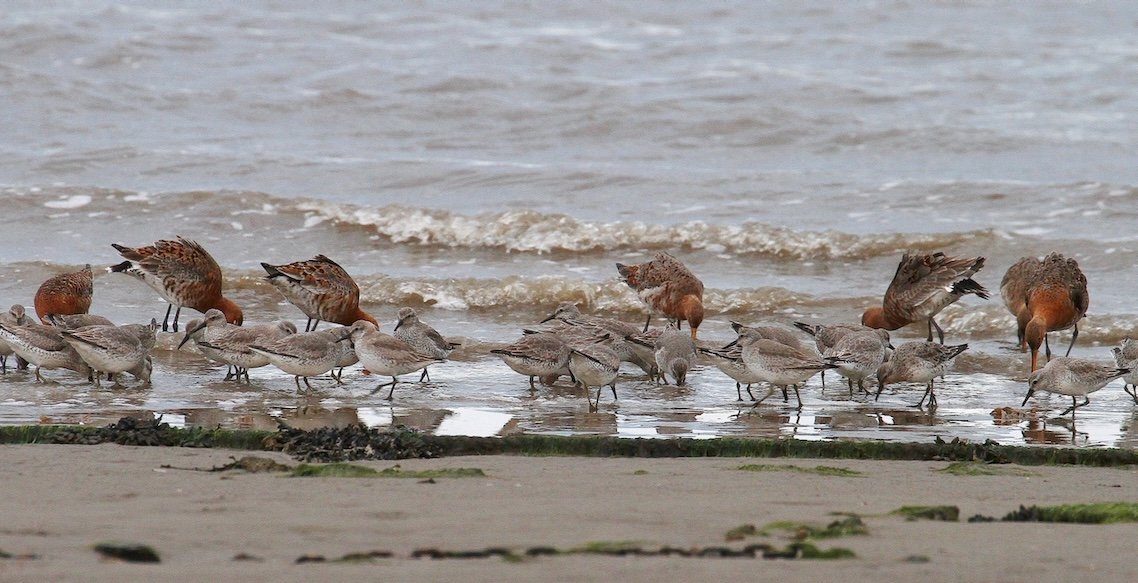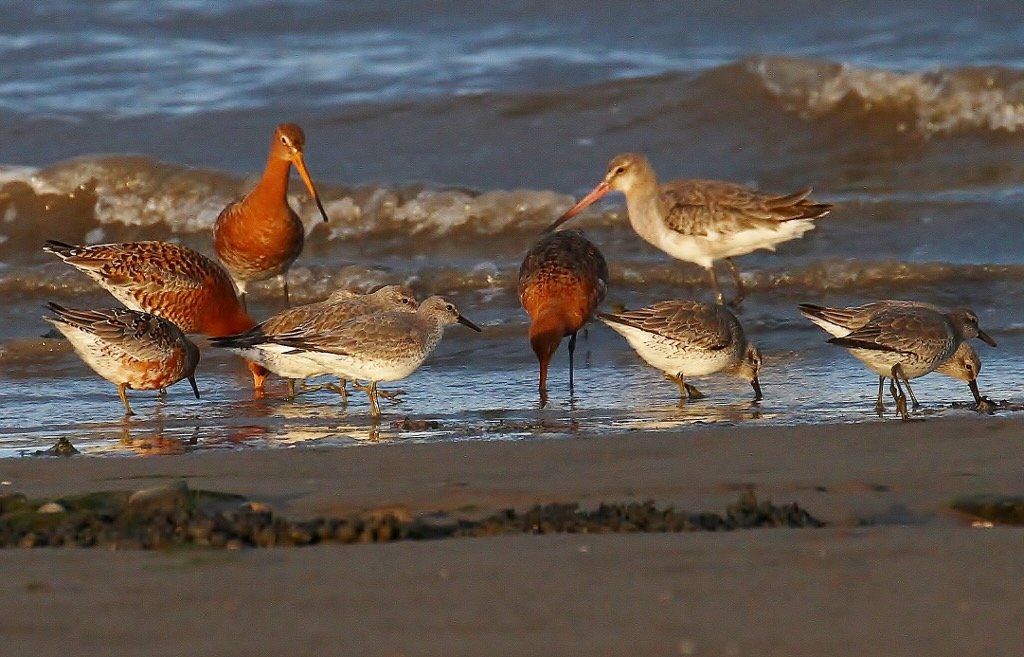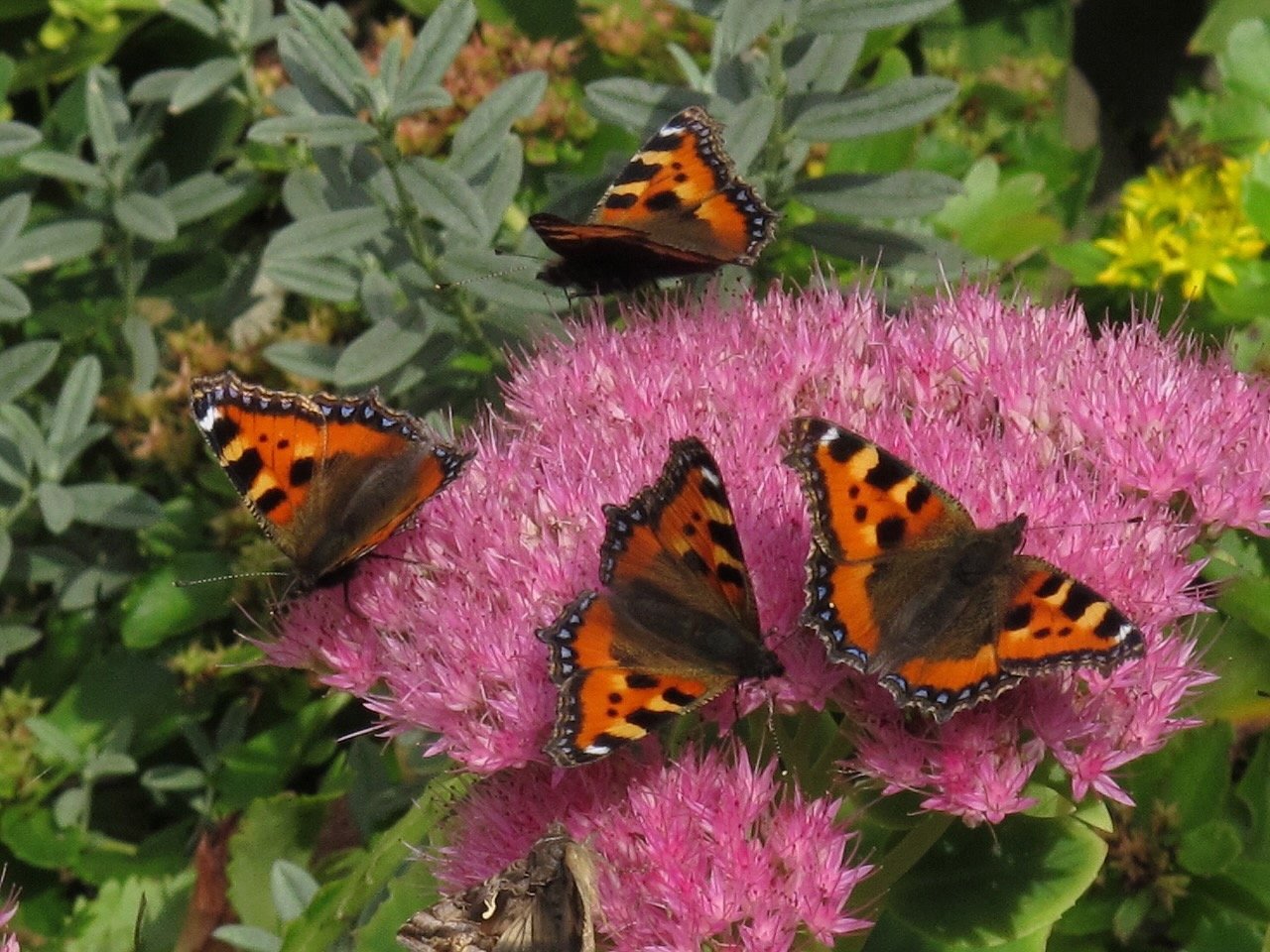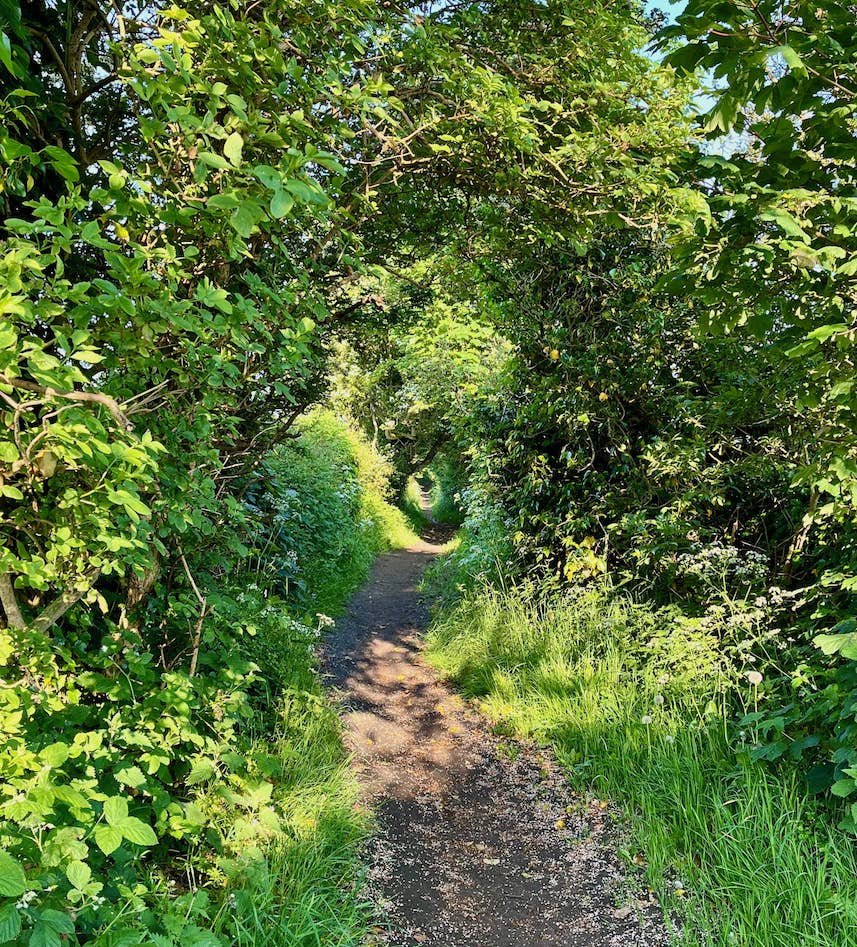
Natural World
Sunderland Point lies in a rich and varied habitat that is home - or a seasonal visiting place - to a wide variety of species, many of whom are rare and some endangered. It is always fascinating and sometimes spectacular.

Black-tailed Godwit and Dunlin
The Point stands on the southern edge of Morecambe Bay which has the highest level of protection for all its wildlife. Its salt marshes, sands and mudflats are designated as internationally important. It’s one of the top three places in the UK for over-wintering birds.
Red, Amber, and Green lists of birds are produced by the RSPB and the British Trust for Ornithology to monitor the health of populations of bird species. The following are examples of birds on the red list that can be seen at Sunderland Point.
Black Tail Godwit
Twite
Lapwings
Tree Sparrow
The mudflats and salt marsh around Sunderland Point are also registered a Site of Special Scientific Interest and a Special Protection Area in the Morecambe Bay and Dudden estuary area, designated by Natural England for the conservation of wild birds.
Sunderland Point is further included in the Morecambe Bay area as a ‘Wetland of International Importance’, especially as a waterfowl habitat under an international treaty called RAMSAR for the conservation of sustainable wetlands.
Click on the image for the webpage
Bird Hide
Bird Life
Butterflies and Moths
Fauna and Flora
In the Water







